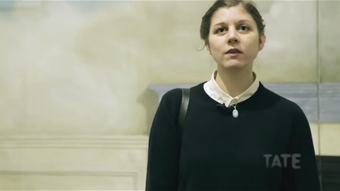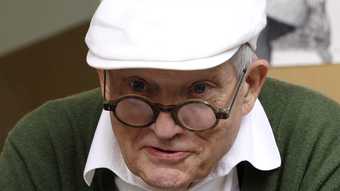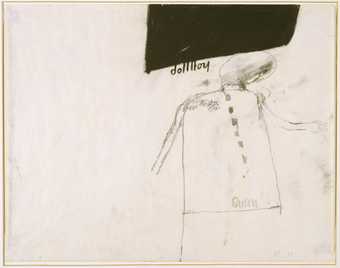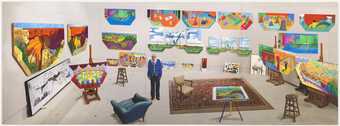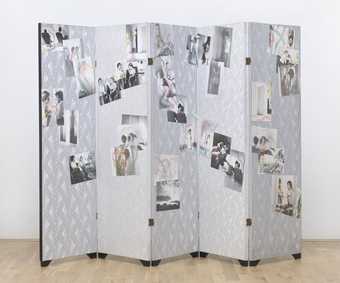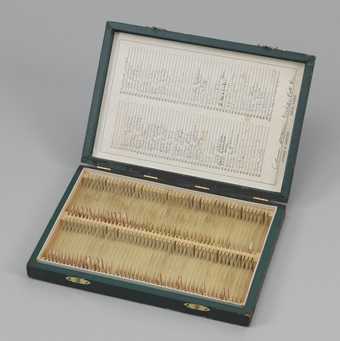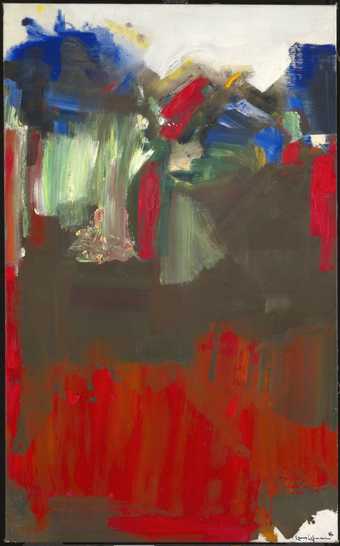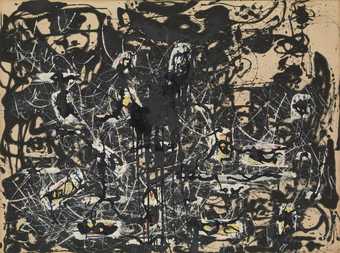The Tate Modern exhibition A Bigger Splash: Painting after Performance in 2012 took a look at the dynamic relationship between performance and painting since 1950. It featured works by artists as diverse as David Hockney, Jackson Pollock, and Yves Klein.
Curator Catherine Wood introduces the show and picks some highlights.
The exhibition is looking at the history of performance as it played back and forth with painting. And then it’s looking at the legacy of that period of experimentation on a series of artists.
In the first room we put David Hockney’s A Bigger Splash, opposite Jackson Pollock’s Summertime, and we’ve shown the Pollock flat on the floor. The Pollock painting, or rather Pollock’s work in general, is seen as a really key point in the history of performance, where the film of Pollock making the painting became as important, arguably, for the next generation of artists, as the finished object. So we showed it flat, because that’s the way that Pollock made the painting in his studio; and we’re showing it with one of the Hans Namuth films of him painting outside.
Hockney made A Bigger Splash in 1967, a few years after he left the Royal College, and it was a time when American abstract expressionism was very dominant in Britain. What I love about the painting is that he’s faked the splash, and it took him two weeks to paint it; so he’s created a figurative painting of a fantasy scene of LA, a place that he loved, and it was kind of his imaginary Elsewhere; and then on top of that he’s placed The Abstract Gesture.
We’re showing the Hockney film, Jack Hazan’s fantasy biography called The Bigger Splash that was made a few years later than the painting; and you can see in the film how the paintings are a kind of backdrop in Hockney’s life with his friends. And they create this atmosphere of permission to behave in a certain way; it’s quite camp, quite flamboyant. So they become this kind of theatre set for his life.
Eleanor Antin’s representational painting is a kind of play on the tradition of painting. There’s no painting in it at all. She’s in front of a camera, and she’s applying lipstick and mascara and blusher, and it’s all about how she’s transforming her own identity rather than painting anything else.
The show moves from a partial history of the relationship between painting and performance between the late fifties and the late seventies. It tells a story internationally of this conversation going back and forth between painting and performance. But then the show moves into showing a series of worlds of artists who, I think, draw on the legacy of those experiments in different ways.
Marc Chaimowicz has always been interested in questioning the distinction between Fine Art and Applied Art. He was very interested in thinking about décor. He went off the canvas quite quickly and started to paint his walls, to design wallpaper, furniture, curtains. The piece that Marc Chaimowicz is showing here is an imaginary bedroom of Jean Cocteau, the French film-maker and artist; so it’s a way of kind of curating works and bringing works together into this imaginary world.
Painting has been declared to be dead for over 100 years now, and many of the works in this exhibition are using performance – you know, deliberately were attacking painting. I think what’s really interesting to look at is how the next generation of artists actually took those things on as a positive. So paint and the canvas are still very much present; it’s just in a more performative way, or a theatrical way.

